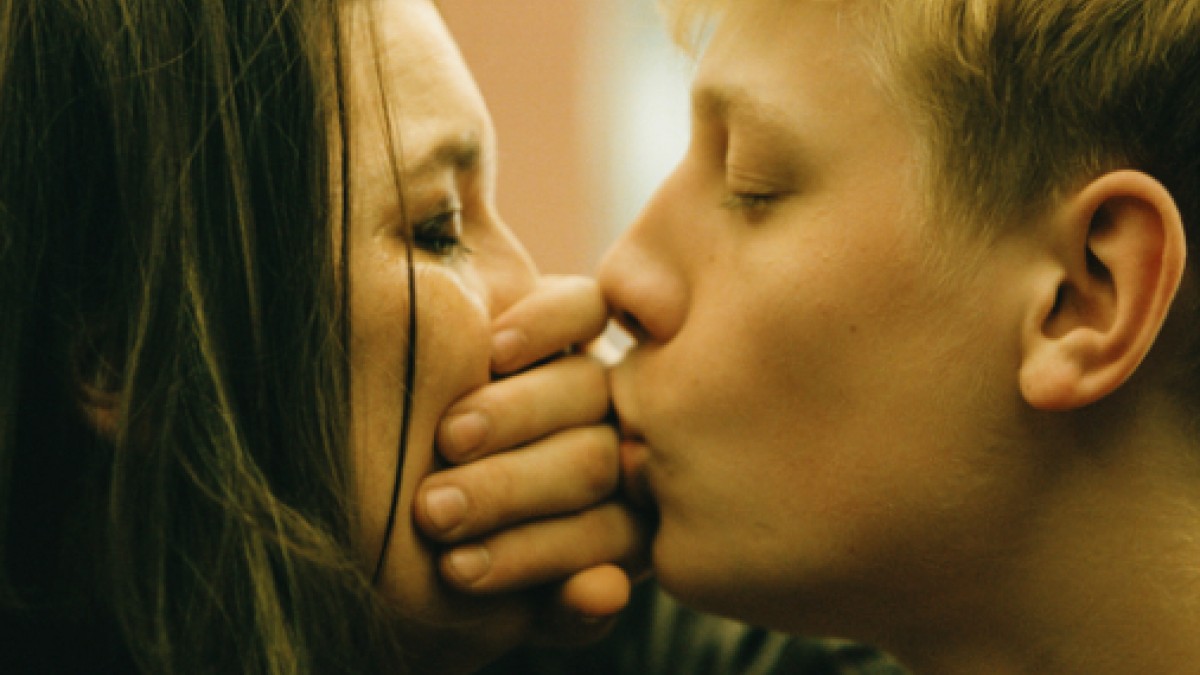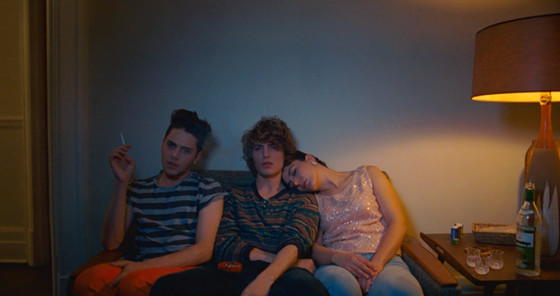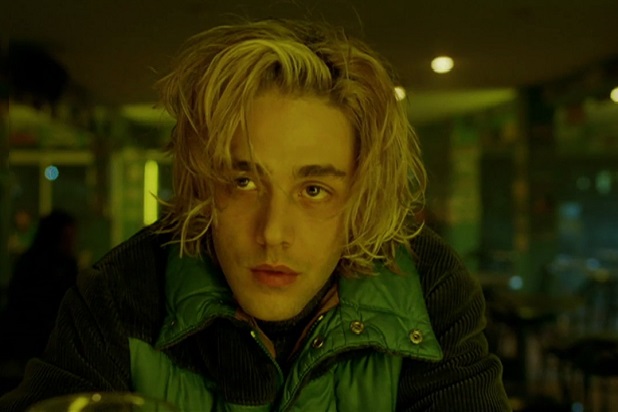
Often regarded as the wunderkind of contemporary French Canadian Cinema, Xavier Dolan is a film auteur of extravagant flair, whose talent encompasses the roles of director, screenwriter, costume designer, editor, and both film and voice actor.
Frequently regarded and unfairly shackled as a Queer cinema talent or a generational filmmaker, Dolan avoids investment in social prejudices by normalizing gender and sexuality, and focuses on pursuing, from an all-inclusive approach, themes of impossible love, sexual vulnerability, and self-discovery.
The director of the upcoming The Death and Life of John F. Donovan first arrived at the international film scene at age 20 after his semibiographical film, I Killed My Mother, received praise in the form of a long-standing ovation at the 2009 Cannes Film Festival.
Since then, the young French Canadian director has released five films: the art house fashion piece Heartbeats (2010), the character study epic Laurence Anyways (2012), which earned Dolan iconic status. Then followed Dolan’s first and successful attempt at genre, the psychological thriller Tom at the Farm (2013), the critically acclaimed Mommy (2014) and then the polarizing dysfunctional family drama, It’s Only the End of the World (2016), for which Dolan won the prestigious Cannes Grand Prix award.
Dolan is known for his sharply poised dialogue, portrayal of unapologetic, heavily individualized female characters – particularly weary mothers – impulsive soul searching young men, both classical and pop music connoisseurship, and flourished visuals that include slow motion, vibrant colors, lush costume designs, unconventional framing, and use of small aspect ratios such as the Academy and 1:1 aspect ratios.
Despite being a distinctive auteur, Dolan’s visual style shares similarities with films from the likes of Wong Kar-wai, Pedro Almodóvar, and Rainer Werner Fassbinder. Dolan has cited Paul Thomas Anderson’s Magnolia, Jane Campion’s The Piano, and Kar-wai’s In the Mood for Love as some of the films that have shaped him as a filmmaker.
Given Dolan’s commitment to his unconventional extravagant style as well as his rapid growth as a filmmaker despite his young age, for purposes of the ranking order, this list will prioritize two factors as its criteria: (1) the French Canadian auteur’s internalization of his own style, meaning its appropriation and technical fluidity, and (2) his growth both thematically and in production value.
Lastly, this list does not intent to present a definitive ranking order of his films, but provide an argumentative discussion as well as brief overview of each film’s stylistic, thematic and technical elements that altogether characterize Dolan as an auteur. Enjoy.
6. Heartbeats (Les amours imaginaires, 2010)

If an intimate and personal perspective towards sexual vulnerability is what characterizes Dolan’s semibiographical film debut, I Killed My Mother, Heartbeats operates as its antithesis. Instead, the French Canadian director’s artistic flourishes – the string of slow motion imagery, vibrant colors, fashionable décor, classical orchestrations, and cinema references – altogether glamorize the romantic triangle’s sexual tension as well as give Heartbeats its undeniable art-house quality.
However, despite its provocative appeal, Heartbeats’ romanticism and cinematic aspirations – particularly the gratuitous slow motion coupled with the musical compositions – often overstates, if not sugarcoats the tone and therefore lessens both its momentum and its characters’ credibility.
Heartbeats follows the friendship duo Francis (Dolan himself) and Marie (Monia Chokri) as they both develop a mutual fixation for the carefree, confident Adonis looking Nicolas (Niels Schneider).
Frequently associated to both Truffaut’s Jules et Jim and Wong Kar-wai’s In the Mood for Love, Heartbeats does not only explore the tensions, ambiguous flirtations, and “cat-and-mouse” games perpetrating this bisexual romantic triangle, but it does so while exhibiting the entitlement, idealized expectations and psychological impact brought by the infatuations in someone else.
In this matter, Dolan succeeds by avoiding focus on Nicolas’ development as an individual, and instead surrounds Francis’ and Marie’s object of desire with mystery as well as ambiguity regarding his intentions.
There is plenty to admire in Heartbeats’ inclination towards artistic repletion – Wagner’s symphonies, the recurrence of Dalida’s “Bang Bang,” the marshmallow hailing around a naked Nicolas, the Nicolas-Michelangelo’s David juxtaposition, and the vocal references to American cinema classics – that despite being redundant in its narrative, it demands attention to its production and cultivated artistry.
Ultimately, if the film’s opening quote by Alfred de Musset that “the only truth is love beyond reason,” is of any indication of Heartbeats as a whole, is that it might be aimless, unwarranted, and oftentimes just plain fictitious, while being youthful, artistically idiosyncratic, and elegantly provocative.
5. It’s Only the End of the World (Juste la fin du monde, 2016)

Although some might find reason to contend for it to rank lower, Dolan’s most recent film It’s Only the End of the World is not only his most polarizing film to date, but perhaps also his most mature. For this film, Dolan departs from the affairs of the impulsive, confused and emotionally unstable young men that trademarked his previous films in order to focus on the dynamics of an unbalanced, excessively volatile family reunion.
Adapted from a stage play of the same name by the late dramatist Jean-Luc Lagarce, Dolan succeeds in transferring the intense verbosity, sizzling passion, and claustrophobic toxicity from its source material.
This is largely due to its brilliant cast, which includes some of the biggest names the contemporary French film industry has to offer – Natalie Baye, Vincent Cassell, Marion Cotillard, Léa Seydoux, and Gaspard Ulliel – the latter in center role as the shy, articulated Louis. Despite great performances all-around, Seydoux and Cassell stand out as Louis’ younger, jaded, and passive-aggressive sister Catherine, and the hot headed, spiteful Antoine, whose presence hovers over rooms like a time bomb.
However, Dolan’s dysfunctional family opera might as well be considered his most misunderstood film, since the French Canadian director’s intention to transport some qualities from the original play to film are, to put it in general terms, lost in translation.
Albeit brilliant, the musical compositions are often dissonant and overstates the tone, the excessive restrictions of space, the abrupt cuts between scenes, and the lack of build-up in momentum (except for the final confrontation), are among the small misfires, which altogether “The End of the World” suffers through its attempt to bluntly literalize its theatrical counterpart.
In terms of visuals, although there are several instances in which it might prove overwhelming, “The End of the World” stands out from Dolan’s filmography due to the young director’s and cinematographer André Turpin’s commitment to close-ups, spatial restriction, and even play against the axis to give the film its sense of anxiety, disorientation, and claustrophobic pestilence. Particularly, the final confrontation, in which Turpin’s lingering close-ups and orange lustered lighting led by Cassell’s intense performance give the film its highest point.
Despite its rough shortcomings, Dolan’s kitchen sink drama presents great performances, and an innovative perspective on not only how to recreate theatrical qualities on film, but also how to convey it to the best of its intentions, even if that purpose is to emotionally exhaust the viewer.
4. Tom at the Farm (2013)

Dolan’s first genre film, Tom at the Farm, is a Hitchcockian psychological thriller that despite not taking full advantage of its genre’s traditions, presents a compelling study of the boundaries of masculinity as well as Dolan’s brilliant capabilities to create an ominous, absorbing, and highly stylized atmosphere.
Tom at the Farm follows the eponymous young man that after his boyfriend Guillaume’s recent suicide, travels to the Canadian countryside to visit and stay with the deceased’s family – his mother (a brilliantly, disturbingly neurotic Lise Roy) and his brother (Pierre-Yves Cardinal) – for his funeral. Dolan stars himself as the fragile, restrained Tom, whose unkempt greasy golden curls, leather outfit and delicate pale face cast the impression of a doll, a foreign scarecrow roaming though golden cornfields.
Tom at the Farm’s allure lies in its atmospheric gravitas. Opening to a French rendition of Legrand’s “The Windmills of Your Mind” as Tom travels through the unknown countryside, the film quickly delves and dwells in a tonal amalgamation of anguish, naiveté and unforeseeable torment reminiscent to Kubrick’s The Shining.
Cinematographer Turpin delivers astonishing visuals that are as bleak as they are exaggeratedly stylized, employing an unsettlingly ill yellow-green palette for indoors scenes and for the open spaces, richly stark contrasts that throws autumnal cornfields, lush trees, and golden beams against deep shadows, thick fog and other dark spaces. Gabriel Yared’s heavily stringed compositions brilliantly underscore these images for an unnerving effect and a texture that oozes with unspoken desires and lost hopes.
Just like It’s Only the End of the World, this film is also based on a play (by Michel Marc Bouchard), and similarly, Dolan’s commitment to keep the source material as intact as possible becomes problematic for the film’s narrative structure. Whereas time compression is natural to theatre, here it blurs the credibility in Tom’s torment and most importantly, his reasons for staying at the farm.
Therefore, despite being brilliantly executed in technical terms, the stakes do not really feel as high as they should during the film’s periods as a psychological thriller: the chase scene, the dark revelations, and other thriller scenes seem more like requirements of the genre.
However, Dolan’s psychosexual tale of desires is most compelling while exploring the dangerous magnetism between Tom and the narcissistic, homophobic, and fatally seductive Francis (Cardinal), whose impulsive, relentlessly abusive and unpredictably flirtatious behavior keeps Tom meek and submissive.
Toxically intertwined, both men project their fears and desires onto each other the further the film progresses. Had Dolan pursued this dynamic further, perhaps Tom at the Farm would have stood among his best films. Similar to its iconic dance scene, Tom at the Farm wanders though an atmospheric cloud of masochism, guilt, psychological transposition and sexuality as substitution for emotional nourishment, themes of which transcend beyond its impressions as a genre.